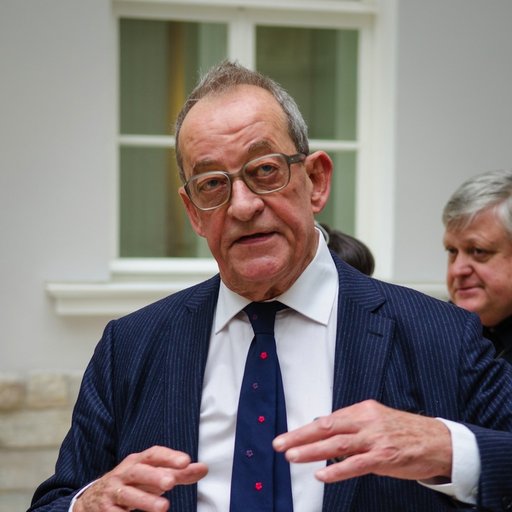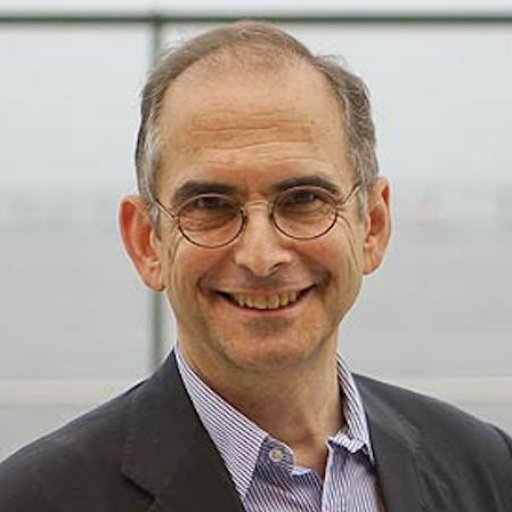Ever since the gentleman-scientist Nicéphore Niépce fixed on paper the first photographic image of his country courtyard in 1826, photographers have been assiduously documenting the architectural world around them. Early on, inchoate technology guided the choice of subject matter. Unlike fidgety sitters or bustling streets, built environments stoically held a pose over the course of the daylong exposure. Nearly two centuries later, photographers continue to point their lenses at the built environment, not due to technological limitations, but rather to lend incisive commentary on our contemporary world.
Architecture, as seen through their viewfinders, transforms into a cultural artifact—a clear and physical illustration of society, argues Elias Redstone in his new sprawling anthology Shooting Space: Architecture in Contemporary Photography. Featuring photographs by 50 artists working today, including masters like Thomas Ruff, Iwan Baan, and Catherine Opie, the collection whisks viewers across the world, from the monotonous high-rises of Hong Kong to spooky industrial relics in Detroit, and even to some mind-bending virtual spaces.
From Paris, the independent curator spoke to Artspace about photographers’ lasting attraction to architectural forms.
So, what got you thinking about the symbiotic relationship between photographers and architects? What is particular about 'architectural photography' as a category?
There is an incredibly powerful relationship between photography and architecture that has a long history, beginning with the very first photographic images. Over time, architecture realized the important role photography plays in communicating their work and ideas, and the built environment continues to be an enduring subject matter that inspires photographers and artists alike.
I began writing Shooting Space partly as a response to the proliferation of images we are bombarded with on a daily basis, to reassert a critical and meaningful relationship that exists between the two disciplines. In the book, I’m looking at artists who use architecture as a prism through which to look at the world. For these artists, architecture represents many cultural forces that have come together and are made visible through built form.
Looking at the built environment as history made visible puts in mind the documentary tradition of Eugene Atget, Bernice Abbott, and Walker Evans. Here, in the piquant essay by Kate Bush, this documentary tradition is positioned against the more conceptual framework of, for instance, Ed Ruscha, whose 1966 photobook Every Building on the Sunset Strip records his drive up and down the strip in a pick-up with a motorized camera. When editing your book, did you feel one school—documentary or conceptual—was more dominant or fashionable than the other in contemporary art today?
With this project, I actually wanted to collapse some of the categories of artists/photographer, or documentary photographer/architectural photographer. Considering the 50 artists in the book, I would be inclined to say that no one tradition is winning out. That said, I am predisposed to present work that moves beyond just the representational to function as commentary or is critical. The critic David Campany talks about three qualities photographs of architecture possess: that they are document, publicity, and commentary. In this book I am looking at how architectural photography provides documentation or commentary, as opposed to just publicity.
Right, as with celebrity, architects depend on the skilled lens man to transform their buildings into icons. When is a photograph promotional and when is it something imbued with artistic merit—was it ever a difficult line to identify while editing the book?
Because this is my personal selection, it wasn’t difficult for me. Another curator would choose a different group of artists. But there are artists represented in the book who are commissioned—such as Iwan Baan and Hélène Binet in the first chapter. They are in high demand by architects to capture contemporary buildings in photographic images. But in both of these cases, I think that they transcend the discipline of architectural photography because of their particular approaches. Anyone who looks at their work and compares it to the mass of architectural photography that gets posted on any architectural or design blogs on a daily basis will see that they have a more critical, engaged eye.
Somewhat related to that, you suggest that some architects today design with the camera’s distinct point of view in mind—to an extent, making these buildings into slick branding exercises. How is photographic technology shaping architectural design?
Many architects are aware of the importance of photography to communicate their work, and this goes back generations. Le Corbusier was an expert at this, working closely with Lucien Hervé to photograph his buildings. An amateur photographer himself, he was acutely aware of the power of photography in promoting his work. I guess I am suggesting that architects today, especially in the boom of iconic architecture of the 1990s—you know, the Bilbao effect—are very often aware of the iconic building needing to be instantly recognized, needing it to be distinctive. Since most people will experience these buildings through the media, the way the building will sit within a photograph is being considered by architects. Without wanting to name names, I think it is very apparent. Architects—“starchitects,” as people like to call them—are commissioned by a developer, or by a city directly, and the image of the development or skyline, in turn, is consumed through the photograph.
Increasingly, these iconic buildings are popping up in the East, and in the book, there’s a particular focus on China. Why do you think photographers today are keen to record the super-accelerated growth of these new centers of capital? Photographer Sze Tsung Leong calls these spaces “increasingly uniform, increasingly designed around sustaining the engine of the market by creating the framework for a consumer-oriented society.” It seems the photographers here are as interested in representing place as “placelessness.” Michael Wolf photographs geometric high-rises in Hong Kong; Nuno Cera shoots the interchangeable hotel rooms at sites of transit; and a handful of other photographers capture the moon-colony feel of the pop-up cities like Dubai or Doha.
For a long time, photographers have played an important role in understanding the urban condition. This can be traced back to Eugene Atget, Bernice Abbott, and Walker Evans. Cities are ever shifting places, and today, with over half the population in the world living in cities, the role of the photographer to examine the human experience of urban space is more important than ever before.
It’s important because many of these places are changing so quickly. I think one of the reasons that China is a particular interest for many artists is that the rate of change is so extreme. Nadav Kander, whose Yangtze River project is included in the book, looks at the vast, monumental infrastructural projects that are emerging in the landscape as this country modernizes at a rapid pace. He’s said that if he went back again, these photos couldn’t be taken. It’s a specific moment in time, so there is a powerful documentary role along with the commentary on contemporary urban experiences.
Another contemporary experience explored in the book is surveillance and control. Most evidently, Richard Ross’s Architecture of Authority series records FBI headquarters, cells at Abu Graib, the borderland between the US and Mexico, among other sites. Ross calls these spaces the “failure of moderation, politics, communication, diplomacy, and sustaining humanity.” Can you talk about the social and political dimension represented by this selection of photographers?
Bas Princen looks at the peripheries of cities—particularly at the new residential communities that are emerging for the middle classes, but also the transit migrant workers and the different ways they occupy these landscapes. And then, Peter Bialobrzeski’s Case Study Homes offers topographical studies of shanty houses in Manila, built on sand, constructed with discarded materials that people find in the city. These structures often get washed away in extreme weather conditions, and it’s a reminder that abject poverty is a reality for so many people on the planet.
I think that by focusing their lens on challenging subjects, it’s an important reminder of the state of the world around us: in particular the physical manifestations of inequality, and all the problems that it causes, and the impact of industrial forces. Edward Burtynsky’s photographs look at the impact of the mining industry, the oil industry, and the extreme implications they have on our natural world. This is part of the chapter on “Man-Altered Landscapes,” a response to the “New Topographics” exhibition in 1975—which has gone on to influence so much work today—and to look at architecture and its impact on the natural world.
The final chapter of the book, “After Architecture,” gathers together an especially fresh collection of work, which feels almost futuristic because of the digital manipulations. Josef Schultz digitally expunges human markings from buildings; Filip Dujardin designs hyperreal structures; Sabine Bitter and Helmut Weber cut-and-paste together structures; and Jose Dávila does away with the building all together. You say these photographers “collapse fantasy, projection, and reality together” and that “the building itself is almost no longer necessary.” It’s a "virtual commodity." Could you talk about this a little?
As I was researching this chapter, I realized that it wasn’t just the impact of digital technology—which has had a massive influence on how photography is both made and distributed today—but it’s also about how these artists are using and manipulating the image of architecture. For them, the actual building is of little consequence. They are responding to the visual idea of architecture and taking that as a starting point in their work, so there is a lot of collage and cutting and pasting, which takes apart real buildings and uses them to create fantastic structures.
But also photographers remove architecture altogether; there’s absence at play here. It was important for me to end the book with Jose Dávila’s series Buildings You Must See Before You Die. Here, he’s taking these images of the most iconic buildings in the world and cutting them out by hand so you have this silhouette that heightens the visual allure of the image, but this also shows how strong, how powerful these works are, and how ingrained on our minds they are.
Could you say that these digital photographers turn into architects then?
To some degree, yes. You mentioned, Dujardin and Gonzalez—they are making their own architectures through their imagined photography, and I think what’s particularly interesting is that in the work of Dujadin, he is taking photographs of buildings he sees near his hometown of Ghent, and then makes modular building blocks from existing buildings to create fantasy structures. But they resonate with contemporary architects—if you looked at one of these images, you could be forgiven for thinking it’s a building designed by one of the more experimental architects working today.
Are there any buildings that you personally think aren't getting their due as seen in a photograph? When is the photo not a sufficient substitute?
There is a particular spatial experience that is lost, and one thing all these artists have in common is that they’re seeking to transform three-dimensions into two. They have different techniques to do this, but they are all aware of the problems of communicating architectural space as a photographic image. But they come up with some very interesting responses. A photograph in and of itself can never replace the spatial experience; it can only offer something new that can sit alongside it, or in some way to represent it.
This is a subject you’ve thought about for many years as a curator, but what surprised you when making the book?
The final chapter was the most challenging, because I’m dealing with very recent changes in technology that has had a dramatic impact on photographic practice. Many people are altering images: So, which are the most important? Who are the emerging artists that need to be marked out and celebrated?
Overall, it was interesting collapsing some of the preconceived notions of what architectural photography is, or what an architectural photograph can be. In all my writing, I try to remove the phrase 'architectural photography,' because it’s so loaded and it comes with so many preconceived ideas. I hope that when people read the book, they will think about the built environment in new ways and look at their own towns and cities with fresh eyes.



























